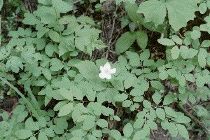
Biology
Biology Lab: Measuring Vitamin C

Lab Exercise
Biology Lab: Measuring Vitamin C
Goal<: To determine relative amounts of vitamin C in different fruit juices. Similar methods are used to determine the nutritive content of many foods.
Theory: Iodine ions in solution normally form a purple-colored complex with starch molecules. However, if vitamin C molecules are present, the iodine ions will bind with vitamin C in preference to the starches. Only when all the vitamin C has been paired off with iodine ions will any new iodine ions be free to join with the available starch molecules. The amount of iodine required to neutralize the vitamin C is therefore directly proportional to the amount of vitamin C in the solution.
Equipment and Materials:
Procedure:
You may use whatever measuring units are convenient for this exercise; the important thing is the ratio you come up with. Read the instructions carefully. Determine what measurements are required, and set up a table or form on which to collect your data.
Prepare an iodine test solution:
- Fill your test tube or small beaker about halfway with a measured amount of water. Record the amount of water used.
- Using the pipette, transfer 10-25 of drops of iodine to the water. Record the number of drops used.
Prepare a starch test solution:
- Fill another jar 3/4 full of water.
- Add approximately 1 tablespoon cornstarch to the jar.
- Stir the cornstarch with the glass rod until it dissolves.
- Add more cornstarch and stir it until the solution is saturated (no more dissolves).
- Set the jar aside and let it settle; this should take about 15 minutes. Don't hurry it.
- Carefully pour the clear liquid into another clean jar or test tube. This is the cornstarch test solution.
Test for vitamin C in juice A:
- Add about 1/2" of the cornstarch solution to a test tube.
- Pour about 1/4 cup of juice A into a beaker (that's all you will need--but be sure that you keep any juice intended to be food in FOOD type containers).
- Add 20 drops of juice A to the test tube cornstarch solution.
- Now add a drop of the iodine test solution to the cornstarch/juice solution in the test tube. What happens?
- Shake the tube. Does the color change remain?
- Continue adding drops (counting them as you do so) and shaking until the solution turns grey and stays grey. Record the total number of drops of iodine solution required.
Test for vitamin C in other juices:
- Repeat the procedure for juice A with one or more other fruit juices. If you run out of test solutions, be sure to prepare subsequent solutions with exactly the same amounts of iodine and water you used before.
- Record the number of drops of iodine solution required to reach a permanent grey state for each juice.
Lab Report
Your lab report should include
- a description of your procedure (be sure to identify the juices you used!)
- a table containing your measurements of iodine required per type of juice
- conclusions about the relative amounts of vitamin C in the different juices.
© 2005 - 2024 This course is offered through Scholars Online, a non-profit organization supporting classical Christian education through online courses. Permission to copy course content (lessons and labs) for personal study is granted to students currently or formerly enrolled in the course through Scholars Online. Reproduction for any other purpose, without the express written consent of the author, is prohibited.